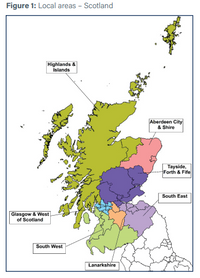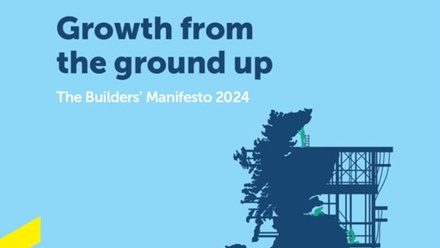
Almost all FMB members will have regular contact with the CITB, especially those who are employing and training apprentices. The CITB in Scotland share insights and meet with our Scotland Director and our FMB Scotland Board. A key output this summer being their new research on local construction skills needs for Scotland.
This report provides an assessment of demand compared to where construction workers were located in 2022, across seven regions of Scotland. It uses a similar approach to previous work carried out in 2018: highlighting potential mismatches within and across these regions of Scotland. As the FMB has members from Lerwick to Lockerbie and from Eyemouth to the Isle of Lewis, this regional perspective is welcome. Of course, there are many localities within each region, so the true local picture may be very different.
Key highlights from the seven regions
- Aberdeen City & Shire. Workforce supply had reduced, and shortfalls were reflected in the increased number of vacancies being advertised.
- Lanarkshire & South West. Both showed more supply than demand, which was the case in 2018, and the gap analysis figures have remained similar.
- Tayside, Forth and Fife. The workforce level has remained consistent, however there is now more supply than demand, whereas there were shortfalls in 2018. This looks to be due to changes in work demand for this area.
- Highlands & Islands. In 2018 there was a shortfall, whereas in 2022 supply and demand looks to be balanced. This is due to a combination of the workforce supply numbers increasing and the demand levels reducing.
- Glasgow & West. In 2018, there was slightly more supply than demand, although there were some occupational gaps. This has changed to a general shortage of workers, with all of the occupational groups having a gap between supply and demand. This is also reflected in the increased vacancy postings for the area which have been high for the last two years.
- The South East. This continues to be an area where demand for workers out-strips supply. Given this it is surprising that there hasn’t been a stronger increase in vacancies being posted, unless the supply of workers is being met by people travelling in from other areas.
Home-grown talent
Another key insight from the report is that construction workers are mainly developed from within Scotland. Furthermore, there is a strong retention of construction workers in Scotland: much higher than the picture elsewhere in the UK.
- 94% of construction workers were living in Scotland when they started their career.
- 76% have worked continuously in the industry, which is higher than the UK figure of 61%.
- 76% have worked within Scotland for their entire career, again higher than the UK figure of 49% for having worked in the same area.
The lengths some will go to work
Of course the distribution of construction workers across different areas of Scotland is to be expected; the project-based nature of work means the workforce flexes to where the work is. From my knowledge of members, I am surprised by the following statistics.
- 32% of workers haven’t travelled more than 20 miles away from their home to work, which is similar to the UK (33%).
- The average furthest distance travelled by construction workers in Scotland is 46 miles: in line with the UK average 49 miles.
- The mean distance from a workers’ home to their current site is slightly less than the UK (16 miles).
What next and how FMB members can help
As Barry Dawson from the CITB explain to me ‘The aim of the research is to provide a robust evidence base which will enable CITB to work in partnership with industry and the education sector to address the skills challenges identified in Scotland.’
The CITB would welcome engagement with FMB members on the development of regional skills action plans, based on this research. A series of webinars in Scotland’s regions to discuss potential solutions to the skills challenges are planned. If you would like to participate, please get in touch.





